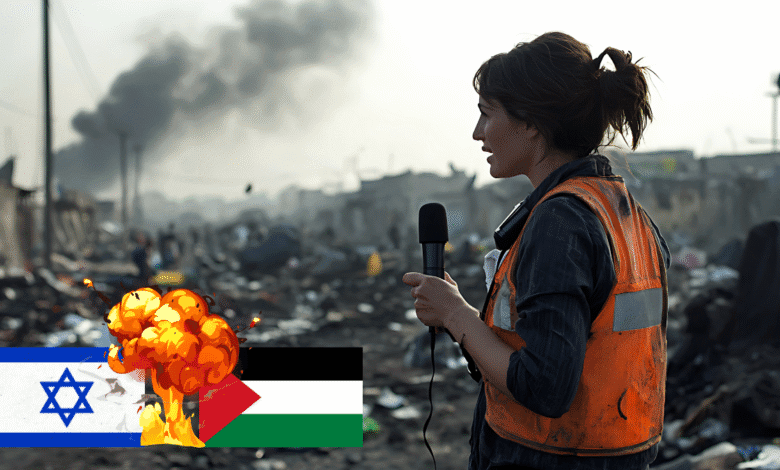Israel : A Comprehensive History and the Palestinian Conflict

Ancient Beginnings
Israel – The land between the Mediterranean Sea and the Jordan River has been inhabited for millennia. Ancient Israelites established kingdoms here around 1000 BCE, with Jerusalem as their capital under Kings David and Solomon. The First Temple was built around 957 BCE, becoming the center of Jewish religious life.
Over centuries, the region was conquered by various empires: Babylonians destroyed the First Temple in 586 BCE, Persians allowed Jews to return and build the Second Temple, then came Greeks, and finally Romans. In 70 CE, Rome destroyed the Second Temple after a Jewish revolt, and by 135 CE, most Jews were expelled or scattered across the world in what became known as the Diaspora. The land was renamed “Syria Palaestina” by the Romans.
Ottoman Rule to British Mandate
For roughly 400 years until World War I, the region was part of the Ottoman Empire. The population was predominantly Arab, both Muslim and Christian, with a small Jewish community that had maintained continuous presence in cities like Jerusalem, Hebron, Safed, and Tiberias.
In the late 19th century, Zionism emerged as a political movement among European Jews, advocating for a Jewish homeland in their ancestral land. Theodor Herzl formalized this vision, and Jewish immigration to Palestine began increasing, particularly fleeing persecution in Europe.
After World War I, the Ottoman Empire collapsed. Britain gained control through the League of Nations Mandate for Palestine in 1920. The Balfour Declaration of 1917 had expressed British support for “a national home for the Jewish people” in Palestine, while also stating that “nothing shall be done which may prejudice the civil and religious rights of existing non-Jewish communities.”
Rising Tensions and Partition
Jewish immigration accelerated dramatically during the 1930s and 1940s, especially as Jews fled Nazi persecution and the Holocaust. By 1947, the Jewish population had grown from about 11% in 1922 to roughly 33% of the total population.
Tensions between Jewish and Arab communities escalated into violence. Unable to reconcile the communities, Britain handed the problem to the United Nations. In November 1947, the UN proposed a partition plan dividing the land into separate Jewish and Arab states, with Jerusalem under international control.
Jewish leaders accepted the plan. Arab leaders rejected it, viewing it as unjust—the proposed Jewish state would receive 55% of the land despite Jews comprising one-third of the population and owning less than 7% of the land.
1948: Independence and Nakba
On May 14, 1948, David Ben-Gurion declared the establishment of the State of Israel. The next day, neighboring Arab countries—Egypt, Jordan, Syria, Lebanon, and Iraq—invaded, beginning the 1948 Arab-Israeli War.
Israel won the war, expanding beyond the UN partition borders to control 78% of former Mandatory Palestine. The war created a massive refugee crisis: approximately 700,000 Palestinians fled or were expelled from their homes. Palestinians call this “Al-Nakba” (the Catastrophe). Some fled out of fear, some were directly expelled, and villages were destroyed. Israel prevented their return.
Conversely, roughly 850,000 Jews fled or were expelled from Arab countries to Israel in subsequent years.
Jordan annexed the West Bank and East Jerusalem, while Egypt controlled the Gaza Strip. No Palestinian state was created.
Subsequent Wars and Occupation
1956 Suez Crisis: Israel, Britain, and France invaded Egypt after President Nasser nationalized the Suez Canal. International pressure forced their withdrawal.
1967 Six-Day War: This war dramatically reshaped the region. Israel launched preemptive strikes against Egypt, Jordan, and Syria, capturing the West Bank (including East Jerusalem), Gaza Strip, Sinai Peninsula, and Golan Heights. Another 300,000 Palestinians were displaced. UN Security Council Resolution 242 called for “withdrawal of Israeli armed forces from territories occupied” and acknowledgment of all states’ sovereignty.
Israel began establishing settlements in the occupied territories—communities of Israeli civilians living on land beyond the 1967 borders. The international community largely considers these settlements illegal under international law, though Israel disputes this.
1973 Yom Kippur War: Egypt and Syria launched a surprise attack on Israel during the Jewish holiday. After initial losses, Israel recovered and pushed back. This led to eventual peace negotiations.
Peace Efforts and Continued Conflict
Camp David Accords (1978): Egypt’s President Anwar Sadat and Israeli Prime Minister Menachem Begin signed a peace treaty, the first between Israel and an Arab state. Israel returned the Sinai Peninsula to Egypt.
First Intifada (1987-1993): A Palestinian uprising against Israeli occupation, characterized by civil disobedience, strikes, and stone-throwing. Israel responded with military force. This period highlighted Palestinian resistance and demands for self-determination.
Oslo Accords (1993-1995): Secret negotiations between Israel and the Palestine Liberation Organization (PLO) led to mutual recognition. The Palestinian Authority was established to govern parts of the West Bank and Gaza. The accords envisioned a five-year interim period leading to final status negotiations on borders, Jerusalem, refugees, and settlements.
However, implementation faltered. Israeli settlements continued expanding, Palestinian terrorist attacks increased, and trust eroded.
Second Intifada (2000-2005): Following a controversial visit by Israeli politician Ariel Sharon to the Temple Mount/Al-Aqsa compound, violence erupted. This uprising was far bloodier, with Palestinian suicide bombings inside Israel and Israeli military operations in Palestinian territories. Approximately 3,000 Palestinians and 1,000 Israelis were killed.
Israel began constructing a separation barrier in the West Bank, which it called a security measure against terrorism. Palestinians viewed it as a land grab since it often extended into West Bank territory.
The Gaza Situation
In 2005, Israel unilaterally withdrew from Gaza, removing all settlements and military presence. In 2006, Hamas—an Islamist organization that refuses to recognize Israel—won Palestinian legislative elections. After violent conflict with Fatah (the party controlling the Palestinian Authority), Hamas took control of Gaza in 2007.
Israel and Egypt imposed a blockade on Gaza, citing security concerns over Hamas, which both countries and many Western nations classify as a terrorist organization. The blockade severely restricts movement of people and goods.
Since then, there have been multiple conflicts between Israel and Hamas:
- 2008-2009: Operation Cast Lead
- 2012: Operation Pillar of Defense
- 2014: Operation Protective Edge (over 2,200 Palestinians and 73 Israelis killed)
- 2021: 11-day conflict following tensions in Jerusalem
- 2023-present: The most devastating conflict cycle yet
Current Realities
Demographics: Israel’s population is approximately 9.9 million (about 73% Jewish, 21% Arab citizens). About 5 million Palestinians live in the West Bank and Gaza Strip.
Settlements: Over 700,000 Israeli settlers now live in the West Bank and East Jerusalem. Their presence is a major obstacle to peace negotiations, as they fragment potential Palestinian territory.
Gaza: The 2.3 million Palestinians in Gaza live in one of the most densely populated areas on Earth under blockade, with limited access to clean water, electricity, and economic opportunity.
Jerusalem: Both Israelis and Palestinians claim Jerusalem as their capital. Israel controls the entire city, having annexed East Jerusalem after 1967, though this annexation is not internationally recognized.
Refugees: Palestinian refugees and their descendants number around 5.9 million, many living in camps across Jordan, Lebanon, Syria, and Palestinian territories. The “right of return” remains a core Palestinian demand but is rejected by Israel, which fears it would undermine the Jewish character of the state.
Key Issues Preventing Resolution
- Borders: Should a Palestinian state follow the 1967 lines? How to handle land swaps?
- Settlements: What happens to hundreds of thousands of Israeli settlers?
- Jerusalem: How to divide or share the holy city claimed by both peoples?
- Refugees: Will Palestinians have a right of return, compensation, or resettlement?
- Security: Israel demands guarantees against attacks; Palestinians demand an end to occupation.
- Recognition: Palestinians want full statehood; Israel wants recognition as a Jewish state.
Different Narratives
Israeli perspective: Israel is the historic homeland of the Jewish people who faced millennia of persecution, culminating in the Holocaust. Israel has a right to exist and defend itself. It has made peace offers that were rejected. It faces terrorism and existential threats from groups committed to its destruction.
Palestinian perspective: Palestinians are indigenous people whose land was colonized. They lost their homes and homeland through no fault of their own. They live under military occupation, deprived of basic rights and self-determination. Their resistance is legitimate struggle against oppression.
Moving Forward
The conflict has caused immense suffering on both sides. Peace efforts have repeatedly failed, with blame shared differently depending on perspective. The international community remains divided between two-state solution advocates (separate Israeli and Palestinian states) and those who see this as no longer viable due to settlement expansion.
What’s undeniable: both peoples have deep historical and emotional connections to this land. Both have suffered greatly. And both deserve security, dignity, and self-determination.
The path forward requires acknowledging both narratives, addressing legitimate grievances on both sides, courageous leadership willing to make painful compromises, and international support for a just resolution. Until then, the cycle of violence and suffering continues, affecting millions of lives caught in one of the world’s most intractable conflicts.
This complex history cannot be fully captured in a single blog post, and people hold passionate, deeply held beliefs on all sides. Understanding requires engaging with multiple perspectives, acknowledging historical facts while recognizing competing narratives, and above all, remembering the human cost of this ongoing tragedy.
Discover more from Sanatan Roots
Subscribe to get the latest posts sent to your email.
